


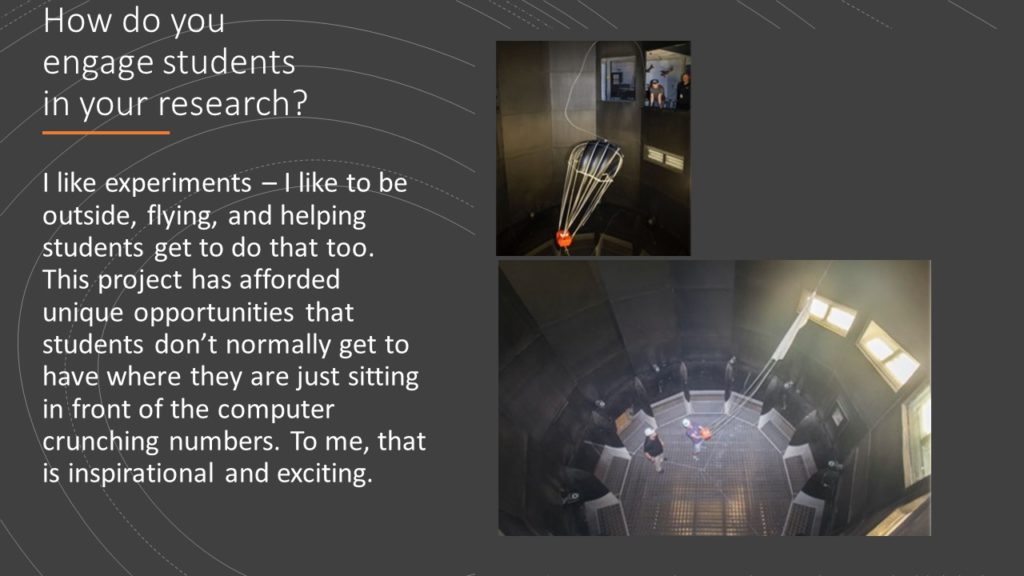
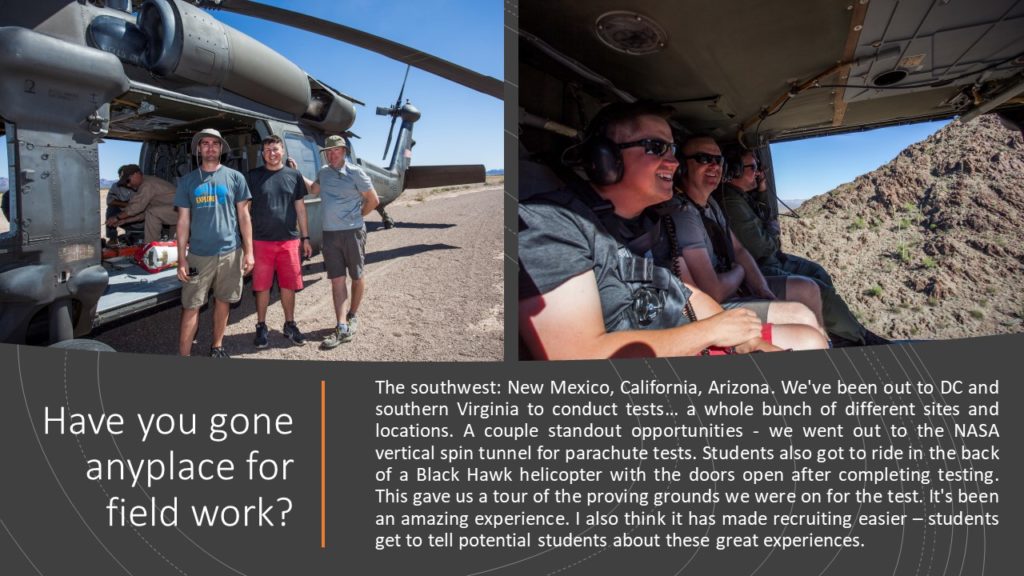





This faculty learning community (FLC) will focus on (1) how and why faculty write differently in their disciplines and (2) how to articulate and apply threshold concepts in writing studies and one’s own discipline. Threshold concepts are “established and widely agreed-upon knowledge/ideas/orientations” that have come to be “foundational” for successfully entering a discipline, according to the editors of (Re)Considering What We Know: Learning Thresholds in Writing, Composition, Rhetoric, and Literacy (23). Modeled after the Howe Center for Writing Excellence’s Faculty Writing Fellows Program at Miami University, this FLC will bring together WI faculty from across the university to learn from the expertise about writing in one’s discipline that everyone brings with them to their classroom and scholarship. This FLC will not only facilitate individual learning about effective writing instruction and assignment design practices but also will make visible the knowledgeable, diverse, creative culture(s) of writing at UMKC.
This Faculty Learning Community will convene ten WI faculty to discuss threshold concepts in writing studies and in their individual disciplines. These discussions will address how and why we write differently in our disciplines. Based upon these conversations, faculty will choose to revise an assignment, unit, or the syllabus of their existing WI course with the intention to teach these revised courses/assignments in the next semester or within the next academic year. Faculty will be encouraged to apply for the FLC with colleagues from their department, and preference will be given to groups of 2-3 from the same department or academic unit.
Last week we emailed and encouraged all of you who are scheduled to teach on campus this fall to confirm the equipment and capabilities of your assigned classrooms. We are hearing that some of you are asking for classrooms equipped to let you live-stream your class sessions so that students who are unable to attend in person can attend via zoom. In the ideal situation, classes like that would be designed and taught in “hy-flex classrooms” equipped with ceiling microphones, multiple large displays to show the faces of students attending remotely, and multiple cameras so that remote students can see the instructor and the students in the classroom. We have only a handful of true hy-flex classrooms available on campus. Other classrooms in HSB and the Conservatory have been modified for specific remote teaching purposes including placing limitations on Zoom and other features.
As an alternative to hy-flex teaching, several of you have proposed to live stream from a traditional ILE classroom using an active zoom session during your class session. We want to be sure you are aware that there are significant limitations to this approach and share some strategies to consider that could help address those limitations.
Limitations of using the camera on most classroom computers for zoom during class:
Ways to mitigate the limitations:
General strategies to keep in mind if using this zoom approach:
Do you have 15 minutes? Could you find 15 minutes a month to reach out to a student if you knew it meant the difference between them staying or leaving UMKC?
UMKC is committed to a Culture of Care and we need your help! In just 15 minutes you can make a difference. We are looking for faculty who are committed to the success of our students. As we assess our retention efforts we have identified a few small pockets of students we feel would benefit from having someone in their corner who can reach out to check-in and help them connect with additional support services as needed.
In the next two weeks, we will be reaching out to a select group of students to welcome them back and ask if they would be interested in having a faculty mentor. We anticipate asking mentors to reach out to students once or twice a month to simply check-in and ask how things are going. Mentors will be provided with additional information on key campus recourses and will have a point person they can contact with any questions or concerns that may arise. If you have 15 minutes to make a difference for a UMKC student, please contact Dr. Tammy Welchert, Director for Academic Advising at welchertt@umkc.edu.
Read UMatters article: Biology Boot Camp Leads to Mentoring featuring Dr. Tammy Welchert and student Ethan Granger.
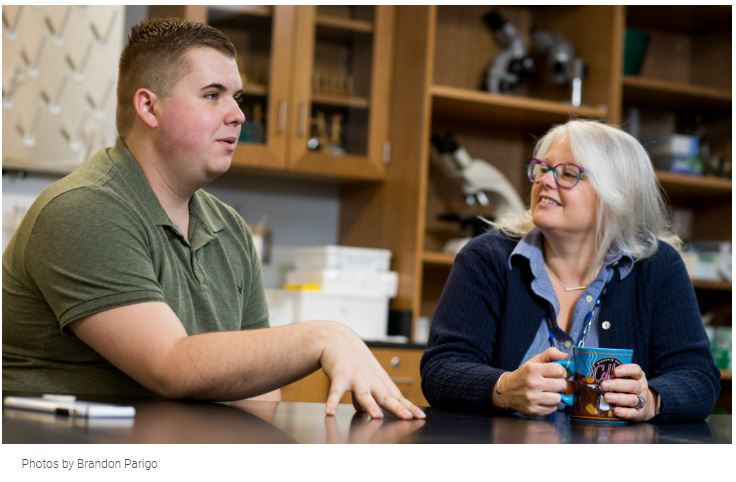
Read Three Things that Help from Faculty Affairs Newsletter
As we finalize preparations for a semester unlike any we have ever experienced, we want to highlight five strategies to consider for your classes to help our students succeed. For some, these strategies may be approaches you have already been implementing. For others, these strategies may be a new way of thinking about how you interact with students. The strength of the strategies is their interdependent nature; together, they reinforce a Culture of Care that will help our students thrive and reduce some tensions with our students. The strategies reinforce that we are all in this together. We hope you find these suggestions helpful.
As a bit of background, last May, Faculty Senate surveyed students about their experiences as learners during the pandemic. Students’ experiences, both positive and negative, hinged on two primary things: communication and ability to focus. Most positive experiences related to faculty who frequently communicated, most negative experiences related to faculty who did not communicate regularly, did not answer questions or did not communicate timely feedback. Most barriers students reported related to their inability to focus, whether due to technology, their home environment, or lack of course structure that promoted engaged learning.
As we head into another semester of crisis-based teaching, we can assume that students will again be experiencing a variety of challenges with attention, focus, stress, and anxiety. As faculty and academic leaders, we will be experiencing many of the same challenges and uncertainties. The strategies we suggest below are a few steps we can take to support student success, manage student expectations, and help mitigate student and faculty frustration with this less-than-ideal learning context.
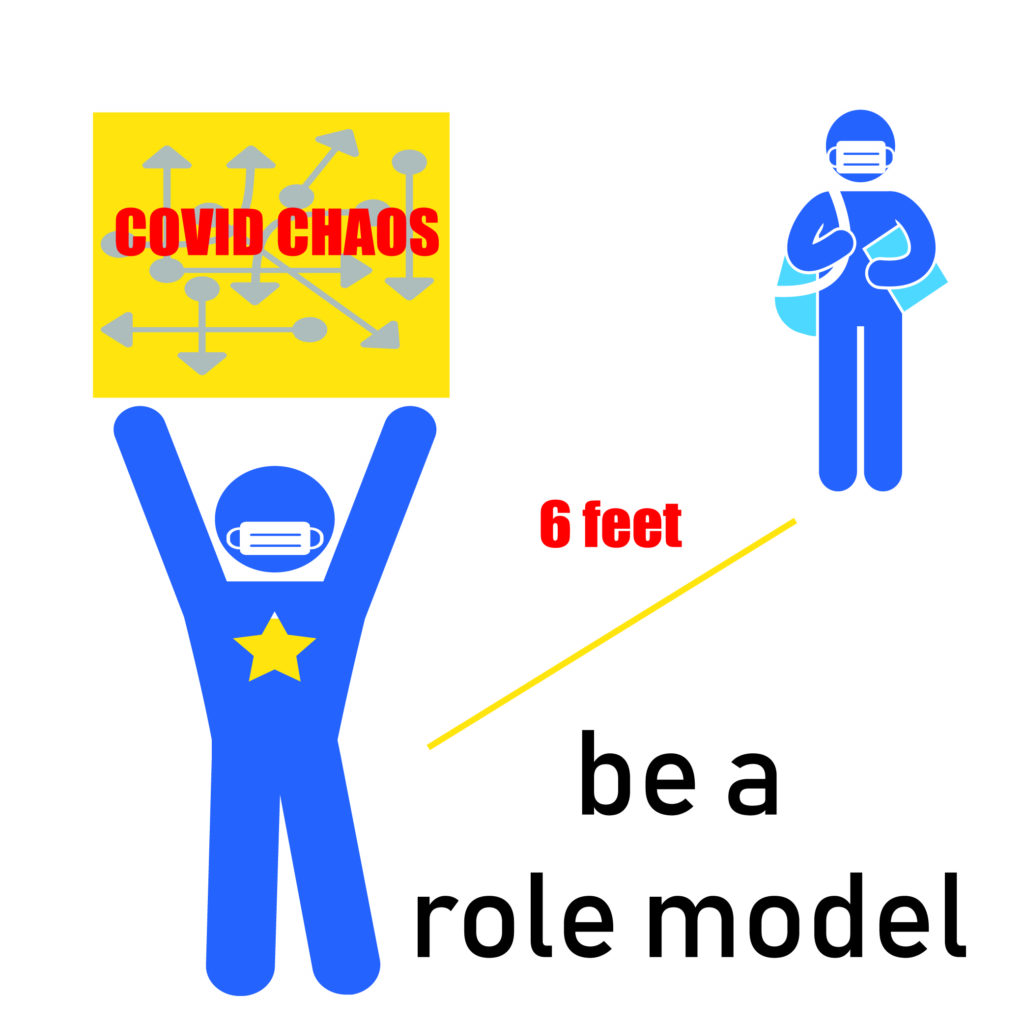
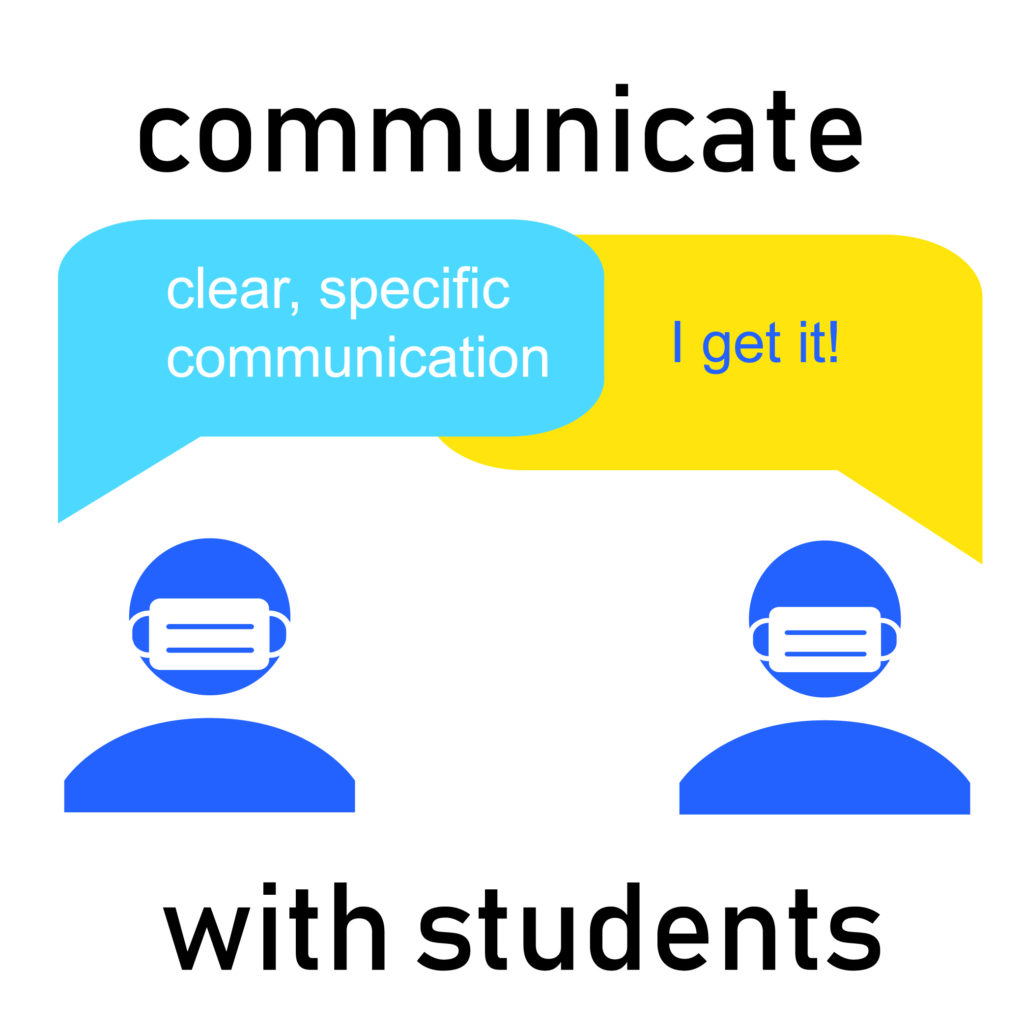
2. Communicate with students regularly, precisely, and directly.
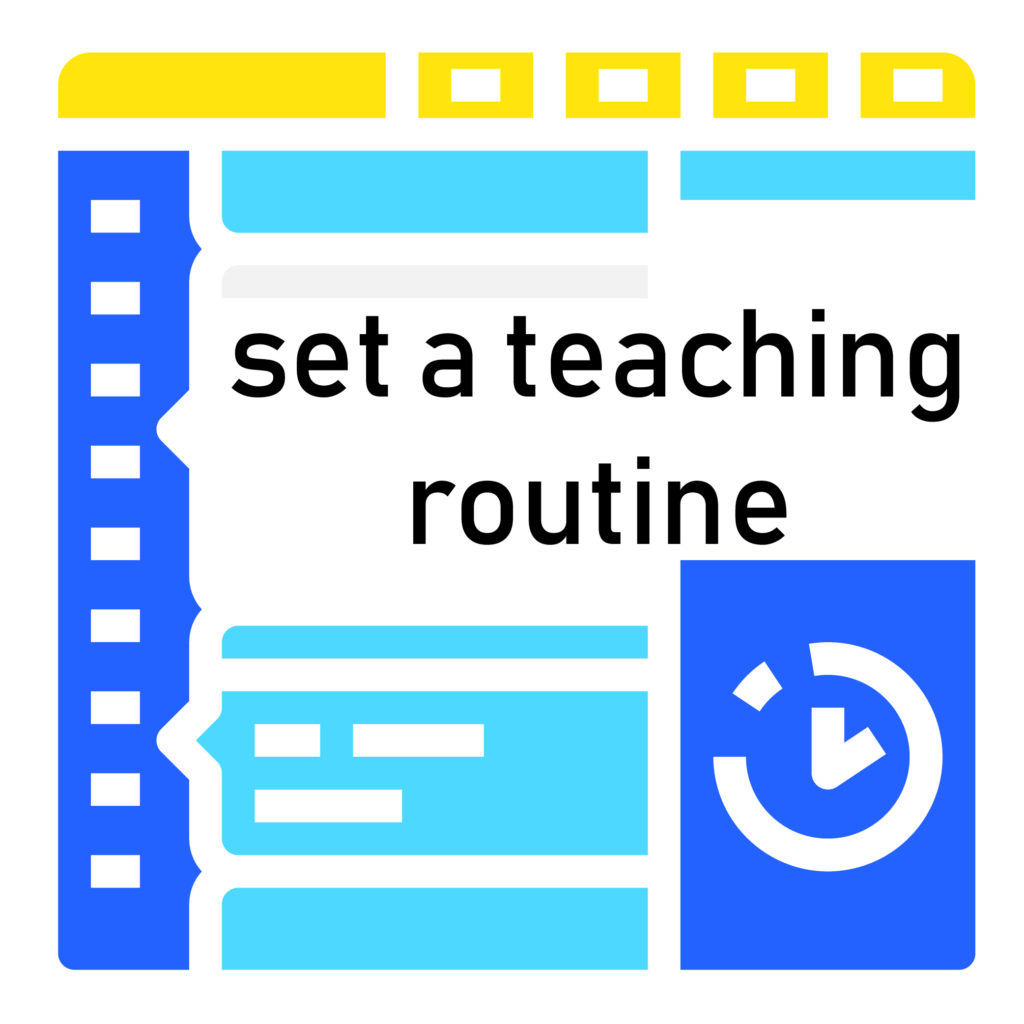
3. Set a schedule or a routine for teaching. Consistency helps students know what to expect – Monday morning announcements, assignments due a particular day and time, and grading and feedback completed by a certain number of days. Many students are goal-oriented. They enrolled in the course to attain a specific goal. Students appreciate organization and clearly defined assignments. Show them how your course will help them reach their goals – even the ones they do not know they have, yet.
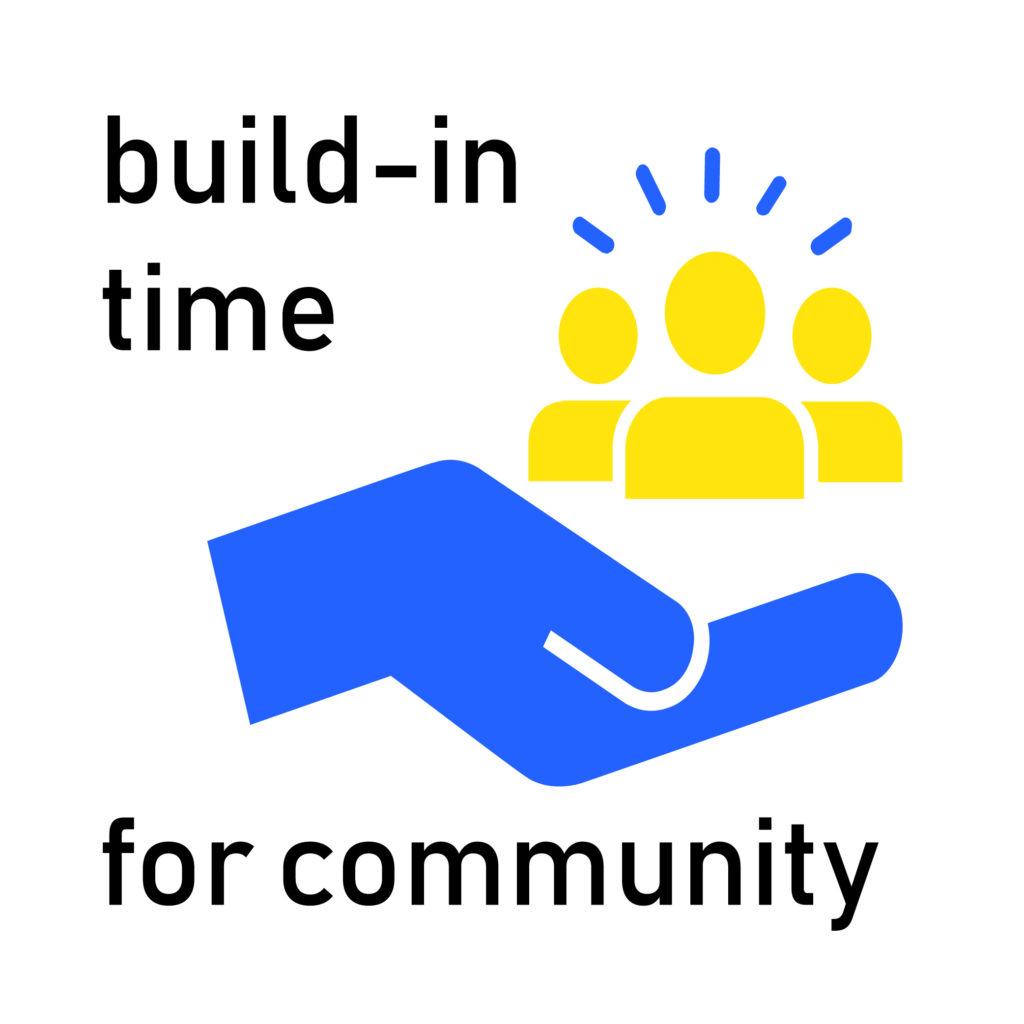
4. Build-in time for community. We will not be able to do some of the things we often do to build and sustain a sense of community. Be creative and find ways that suit you and your students. The most effective adult educators may be unwitting neuroscientists who use their interpersonal skills to tailor enriched learning environments. Our brains learn through shared experiences. Throughout the life span, we all need others who show interest in us, help us feel safe, and encourage our understanding of the world. Brains grow best in this context of interactive discovery and through co-creation of stories that shape and support memories of what we are learning. (Cozolino & Sprokay 2013)
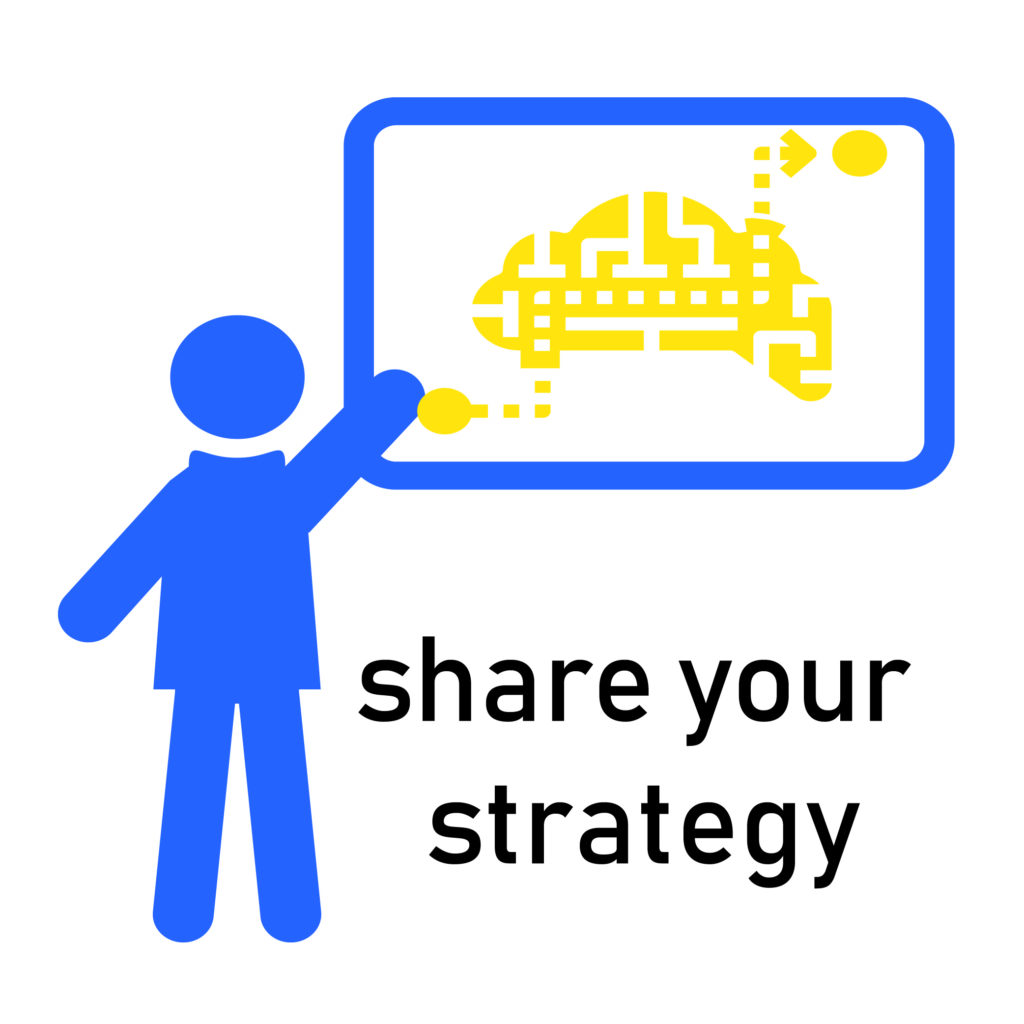
5. Let students know your reasoning or strategy behind various aspects of the class. Students need to see a reason for learning something new. Helping students see how they can apply their learning to their lives, employment, and other courses, helps them see the relevance of what you are asking them to do. “Tell me, and I will forget. Show me, and I may remember. Involve me, and I will understand.” – Confucius, 450 B.C.
Use of Webcams in Online Learning and Student Privacy
Many faculty have asked questions about how to manage the use of cameras, including whether or not they can require students to have cameras, and whether or not they can require students to turn on the cameras during synchronous class meetings. While the policy provides insights, this workshop provides the opportunity to ask questions.
Presenter(s):
Event format descriptions are available at UMKC PROFFCourses.
After signing up for this event, you will receive an email confirmation. Prior to the event, you will receive a second email containing the Zoom invite link.
The need to design our courses as format flexible this fall is bringing anxiety for many. Format flexible adds intentional online elements to the course structure, so should there be a need to transition, we teach and students engage in online learning rather than remote learning. Join us for a conversation on the challenges that faculty are facing in preparing format flexible courses and some ideas to make the transition easier.
Message from Provost: “Many courses will be offered as hybrid/blended or hy-flex in the fall semester as a means to increase accessibility, flexibility, and reduce classroom demand. Both hybrid and fully-face-to-face courses must be designed as format flexible so that if we need to make a quick shift to remote instruction, it will occur as a seamless transition to an online experience for students that continues to be highly engaging and continues to meet all of the student learning objectives for the course.”
Presenters:
Event format descriptions are available at UMKC PROFFCourses.
After signing up for this event, you will receive an email confirmation. Prior to the event, you will receive a second email containing the Zoom invite link.
Collaboration and online interactions. Learner to learner interaction can be achieved by assigning small group projects, by requesting responses to discussion board postings and by engaging students through peer-evaluated assignments or critiques (QM Standard 5.1). In this session, we will discuss our experiences with a variety of interactions and online engagement, such as peer-evaluated assignments, oral interviews in foreign language, VoiceThread, and Canvas discussion boards (inviting the audience to share also). Finally, we will discuss our collaborative engagement in messaging with students, providing feedback on the assignments and setting productive communication guidelines.
Event format descriptions are available at UMKC PROFFCourses.
After signing up for this event, you will receive an email confirmation. Prior to the event, you will receive a second email containing the Zoom invite link.
So you are burnt out?! Identifying and understanding burnout in faculty members. This presentation will provide an overview of burnout and secondary trauma while helping you to identify strategies for self-care.
Agenda:
Presenters:
Sara Pilgrim, School of Social Work
Laurel Watson, Division of Counseling and Educational Psychology
Academic Unit: School of Education
Bio: https://education.umkc.edu/directory/watson-laurel/
Event format descriptions are available at UMKC PROFFCourses.
After signing up for this event, you will receive an email confirmation. Prior to the event, you will receive a second email containing the Zoom invite link.
This session will feature a small panel of faculty describing the lessons they’ve learned about students, and the tips and tricks (or words of wisdom?) these faculty wish to share with those preparing to teach online this fall. The panel presentation will be followed by a Q&A period and the opportunity to brainstorm ideas for how faculty might address specific needs in their own classes.
Presenters:
Event format descriptions are available at UMKC PROFFCourses.
After signing up for this event, you will receive an email confirmation. Prior to the event, you will receive a second email containing the Zoom invite link.
[description soon]
Presenter: Caitlin Horsmon, Associate Professor, Film & Media Arts & Chair, Department of Communication Studies
Academic Unit: College of Arts and Sciences
Bio: https://cas.umkc.edu/directory/Horsmon-Caitlin/
Event format descriptions are available at UMKC PROFFCourses.
After signing up for this event, you will receive an email confirmation. Prior to the event, you will receive a second email containing the Zoom invite link.
As educators, we have many rich experiences that will help us connect to the 21st-century student in ways we may not have seen. Students have needs that we don’t understand. We have to realize that we, too, have to learn something new every day to help us understand the needs of those we teach. This course will hopefully help us reveal teaching tools we never thought we had. This course will offer insight into how professors can tap into their lives outside of the academic environment to glean information about how to work with the 21st-century student during this COVID-19 long-distance learning period that confronts us. Ideas about reaching students can come from raising children or taking care of elderly parents, or growing a garden, or singing in the church choir, for example. Connect with what engages you to find ways to engage students.
Presenter: Michael Blake
Academic Unit: Conservatory
Bio: https://conservatory.umkc.edu/profiles/faculty-directory/michael-blake.html
Session 1 of 3: Please note: this faculty learning community meets three times: July 6, July 13, and July 20, from 9:00 – 10:00 am
Event format descriptions are available at UMKC PROFFCourses.
After signing up for this event, you will receive an email confirmation. Prior to the event, you will receive a second email containing the Zoom invite link.

Imaginative storytelling has the narrative power to build greater empathy within and among readers. In support of the African-American community in Kansas City, nationwide, and all over the world, the UMKC English Department offers the following list of recommended creative works by African-American writers:
Hadara Bar-Nadav, Professor and Director of Creative Writing, recommends: Gwendolyn Brooks’ Selected Poems
Virginia Blanton, Curators’ Distinguished Professor, recommends: Zora Neale Hurston’s Their Eyes were Watching God
Britta Bletscher, MA student and GTA, recommends: Alice Walker’s The Color Purple
Crystal Doss, Associate Teaching Professor, recommends: Toni Morrison’s Beloved
Madison Clay, MA student, recommends: Angie Thomas’s The Hate U Give
Ande Davis, PhD candidate, recommends: Kwanza Osajyefo, Tim Smith, Jamal Igle, and Khary Randolph’s BLACK
Laurie Ellinghausen, Professor and Interim Chair, recommends: Ralph Ellison’s Invisible Man
Robert Farnsworth, emeritus faculty, recommends: Richard Wright’s Native Son
Thomas Ferrel, instructor and director of the Writing Studio, recommends: Alice Walker’s To Hell with Dying
Jane Greer, Curators’ Distinguished Teaching Professor, recommends: Nella Larsen’s Quicksand
Emily Grover, Instructor, recommends: Chimamanda Ngozi Adichie’s Americanah
Christie Hodgen, Professor and Editor of New Letters, recommends: James Baldwin’s “Notes of a Native Son”
Sheila Honig, Lecturer, recommends: James Baldwin’s “Sonny’s Blues”
Ben Jasnow, Instructor, recommends: Frederick Douglass’ Narrative of the Life of Frederick Douglass, an American Slave
Sarah Beth Mundy, Instructor: recommends: Chinua Achebe’s A Man of the People
Ashley Pendleton, MA student and GTA, recommends: Nic Stone’s Dear Martin
Jennifer Phegley, Professor, recommends: Colson Whitehead’s The Underground Railroad
Robert Stewart, the former editor of New Letters, recommends: Tim Seibles’ One Turn Around the Sun
The Teaching Evaluation and Teaching Enhancement Task Force asked students and they told us how faculty communicated, offered support, continued to provide the structure of courses amidst uncertainty. This qualitative survey has had over 500 responses where students told their stories. The survey closes at the end of the week.
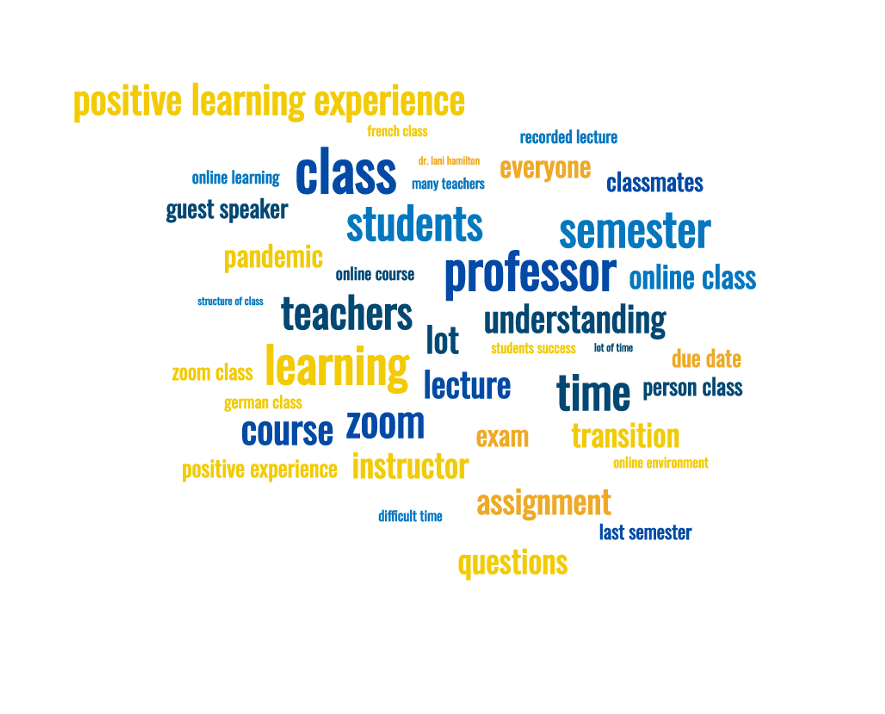
Representative quotes:
“3 of my professors were very successful in making transitions to online learning. They tried to find the best way to deliver lectures online and kept making positive changes. They bought or brought devices to their remote work location and used them efficiently. They were always open to questions and quick to respond to emails. Though it was hard for everyone to make such transition those professors didn’t complain about how hard it is on their end.”
“A lot of my teachers have been very gracious and supportive during this time and as a student, I really needed that. My most positive experience has been seeing how much some professors truly care about their students and their well-being, rather than grades and success.”
“A lot of the lectures are being held on Zoom. This is very helpful for me because I have the confidence to speak up now that we have the option to post our comments, questions, and concerns in the chat bar rather than having to speak up in front of 100 students in a lecture room. Also, for one of my classes, the lectures are recorded which is so helpful in referring back to when completing assignments.”
In higher education, our first responders are the faculty. With a day (and a weekend … and spring break) you moved courses completely online. Faculty figured out new technology, took apart courses, and put them back together in the best way possible for our current context. Daniel McIntosh, associate professor of Physics, shares how he redesign and rethought his Intro to Astronomy course.
Last March, Daniel McIntosh, associate professor in the Department of Physics, moved his teaching online for the first time. Over Zoom, I interviewed Dan about what the move to online entailed, what he learned, and how he is planning to build on his experiences for fall.
AP: In general, broad terms, how did the shift to online teaching go for you?
DM: It was a big challenge. I never taught online at all and was actually opposed to the practice in terms of the impact on the students’ experiences. I have taught and designed my classes to be highly interactive where students are spending on average 50% of the time in lectures doing higher-order thinking and collaborative learning problem-solving together. Faced with the facts – there was no choice, my students didn’t sign up for an online class, and we are all stuck at home – I felt super invested to make that experience as high-quality as possible.

The first couple weeks I felt pretty down about what was happening in the world. I paid close attention to the news and the projections and then I could see where the death rate was going was obvious. So I was feeling really bummed out. I basically just threw myself at it [online teaching]. ASTR 150, Introductory Astronomy – Motions of the Cosmos saw the biggest change. The class had over 70 students and among those students included eight high school students from A Bridge to the Stars and five Propel students. I focused on how to make that class as active as possible – it consumed weeks. I was staying up until 2 o’clock 3 o’clock in the morning trying to finish things. [Through that process,] I completely rethought what I was doing.
AP: What changed for Introductory Astronomy?
DM: My class was highly active and I weighted participation, you know, it was worth 20% of the course grade. Most of the course grade consisted of several high risk exams. I was teaching in this active way to help students master the content and build their skills. Students love it – the evaluations are always good. Many students have shared that they didn’t think they could understand science or do well in science before Intro Astronomy. I had positive remarks because the active learning helped students master the material.
In the last year, I’ve been going to conferences, meeting with different groups, and learning about equitable education. The shift to online gave me the opportunity to incorporate what I have been learning about equitable education and culturally responsive teaching. I realized that the Introductory Astronomy class had 60 percent of the grade based on high-risk tests. What I really care about is do students learn the material, how do they learn the material, and what should I grade students for effort. I decided to shift my focus from the high-risk tests to the effort students put into learning the material. I set up online learning with discussion sections. Students watched a video lecture – basically a narrated slideshow. Then students joined a discussion group for collaborative learning that they completed with their peers, online, asynchronously. This way I could see their effort and I could grade their effort. I then set up mastery quizzes that were worth a lesser fraction of the grade.
AP: Aside from shifting your focus, what else changed for you?
DM: I had to stop worrying about things like do students cheat. That’s not what I care about.
We get indoctrinated into the system of caring about is it fair or not? Are they going to cheat or not? Rather than what I really care about is did they learn or not? I had to figure out how to teach online in a way that encourages effort and recognizes that students learn at different rates. Spring semester, some students got really bummed out, fell behind, and then got completely discouraged. I’ve been doing all kinds of work and lots of communication to encourage them.
AP: How did you encourage students?

DM: I sent announcements with encouraging language with messages like “I understand how you feel.” “I can understand how tough it is.” The students who really were struggling with engaging online, and had 0s, I let them know there was still an opportunity to get their work in. They can still pass or better in class. Students started responding. They popped up and started getting their assignments in. They always started with an apology for being behind. I always responded that I was so happy to hear from them, no need to be sorry. They then were excited and happy that I gave them that opportunity and said they would try their best.
AP: Yeah, that’s great. How do you set up your quizzes?
DM: Students get multiple efforts and they get a big window. This worked better than setting up the exam from four o’clock to five o’clock and if students ran out of time, tough. This is what I realized from looking at all online blogs and listening to people talking about their concerns about cheating…. I realized that there are issues with access. Some students might not have the same access to computer at the same time, or maybe they’re sharing the computer. Maybe they have an old computer with discouraging technical problems. I want the students to have a chance to show me what they learned.
I set up the quizzes so students get two chances to take them. So, a student takes the quiz the first time and then sees which questions were wrong. I encourage the student to go back and study and then take the quiz again. I give students a 12-hour window to take their two attempts. Sure, some students could figure out which ones they got wrong, call their friend, and look around for answers. They’re basically spending the same amount of effort as they would to look at the slides, and most students figure that out. They go focus their study, look at discussion questions and comments.
AP: What does active learning look like in your class?
DM: I decided I would do a bunch of mini lectures with a lot of interactive content integrating all the lectures together. It created a lot of work for me. I could no longer keep my active learning format I had built over several years. Now I have to carry each topic through like a normal traditional lecture, giving them all the content very clearly explained. I was worried about what the student experience would be like, as well as worried about access.
It was clear that asynchronous was the way to go. I broke my hour and fifteen-minute lecture into mini-lectures. I decided to focus on one key topic to make short little units. The units ideally would be 8 to 10 minute long videos. Basically students watch the video and they click that they’ve done that. The slides are posted from the video. The next thing is they have to join a group. Step 3 is to participate in the discussion of the group they joined. That’s worth a huge amount of their grade – 40-50 percent. The rule for full credit is that they enter their own response to the question. To get the full credit they have to give at least a one-sentence description of why they think what they think is the answer. When they hit submit, they see their group’s answers and their group can see their responses. Students then have to select another student who has fewer than two responses and respond. They have to say they agree or disagree and a one-sentence explanation of why. Now, of course, some students could game it. They could not watch the video. They can just say it’s done. They can go to the discussion section and you know to type in something and see other answers. But this is collaborative learning and it’s asynchronous collaborative learning.
AP: Are you going to continue teaching online?
DM: Yeah, I’ve had a complete phase change in my thinking about it. A lot of students want it for increased access – but it also creates access issues. Clearly a lot of people want online learning to happen. I don’t know about entire online degrees I think students would lose a lot of experiences. At the same time I can see where a lot of content can be delivered in an active way. I got excited thinking maybe there’s something here about this facilitating active online learning. Maybe that’s what online learning needs to be really good. I’m even thinking about blended courses.
AP: Has there been anything that you didn’t anticipate that has come out of your move online that’s been really positive?
DM: Well, personally yes. I have experienced growth for myself. I was a little bit troubled with my complete opposition to online learning because I felt sort of like a Luddite I was missing something or being resistant to change. My resistance all had to do with the student experience. But you can still do active learning online. It’s like I want to do whatever I can to make learning online a really positive experience for the students. It was worth all the effort.
AP: What’s your favorite feature of Canvas?

DM: Oh, wow. There’s actually a lot of good features on campus. I like the modular feature where you can set up steps and make them connect to each other to force things to be done sequentially. I like the discussion feature that makes it so that students can’t see the other people’s responses until after they contribute. The gradebook – I like how I can select a certain assignment and can send announcements based on how the students performed. And the speed grader is cool.
AP: Anything else you want to add that we haven’t covered?
DM: My big advice is communicate with students – repeated, repeated communication. That was one of the most important piece of advice that I read repeatedly in the beginning before I even set up a single class. I always valued communication, but making sure to have plenty of encouraging communication is important.
I think it was well-timed to learn how to do online education with learning about the equity. My tendency before was to have hard lines. I think that’s the indoctrination that we went through in education. It’s easy to get caught up in fairness and in exams or more judgment, right? Since I’ve been learning about equity, what has helped me the most is being 100% empathetic and flexible with the students. Even a year ago I would be very empathetic but I wouldn’t be as flexible. It’s easy to be caught up in this cycle of fairness and judging. We are trying to assess students’ abilities. We think that with our standard exams with the set time limit, it’s not fair to give other people more time. That is missing the whole point of trying to help people learn and reach a goal of knowing something. One analogy might be apprenticeship. Let’s say someone wants to be a plumber and they apprentice with an expert plumber. Some of the apprentices pick up the skills fast and others take two, three times longer. But if they eventually master the skills, they still get to be a plumber. The goal is not to decide who’s the genius; the goal is to help people learn and grow.
AP: Thank you so much.
DM: You’re welcome. I can talk about this stuff forever.
Associate Professor
Director, A Bridge to the Stars Pipeline Program
Provost Fellow (2018-2019)
Norman Royall Distinguished Professor (2017-2019)
UM President’s Award for Innovative Teaching (2016)
Office: Flarsheim Hall #250M
Ph: 816-235-5324
Email: mcintoshdh@umkc.edu
A Bridge to the Stars

PROFF Courses will provide a variety of learning opportunities this summer: workshops, learning communities, hackathons, Canvas open houses, and an unconference. Watch for a virtual town hall in about two weeks to launch PROFFCourses.
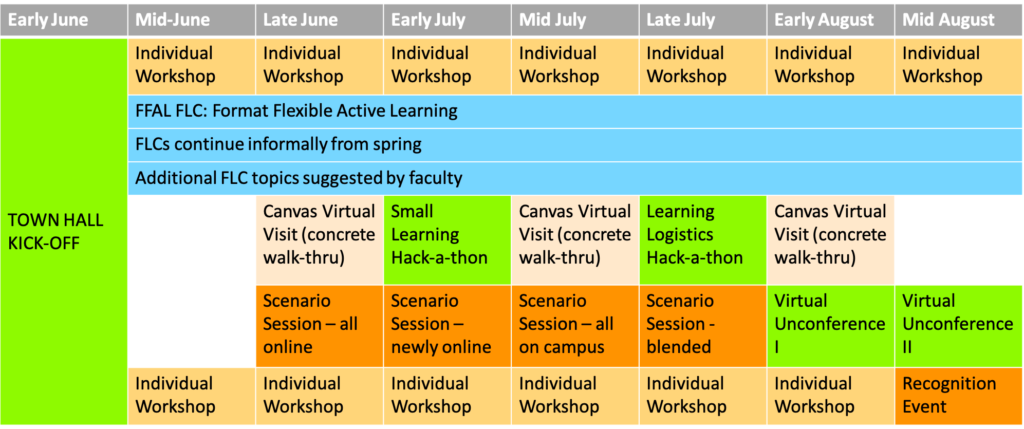
With 25% of our hoped-for response rate, here are some preliminary results of Undergrad You.
48% identified as first generation
97% participated in extracurricular activities or programs
What was your major?

64% participated in sports-related activities, mostly as a fan or through club/intramurals, one-third on college teams.
When you think about your experience as an undergraduate, what words come to mind?

Typewriters, posters, coffeemakers, and graphing calculators
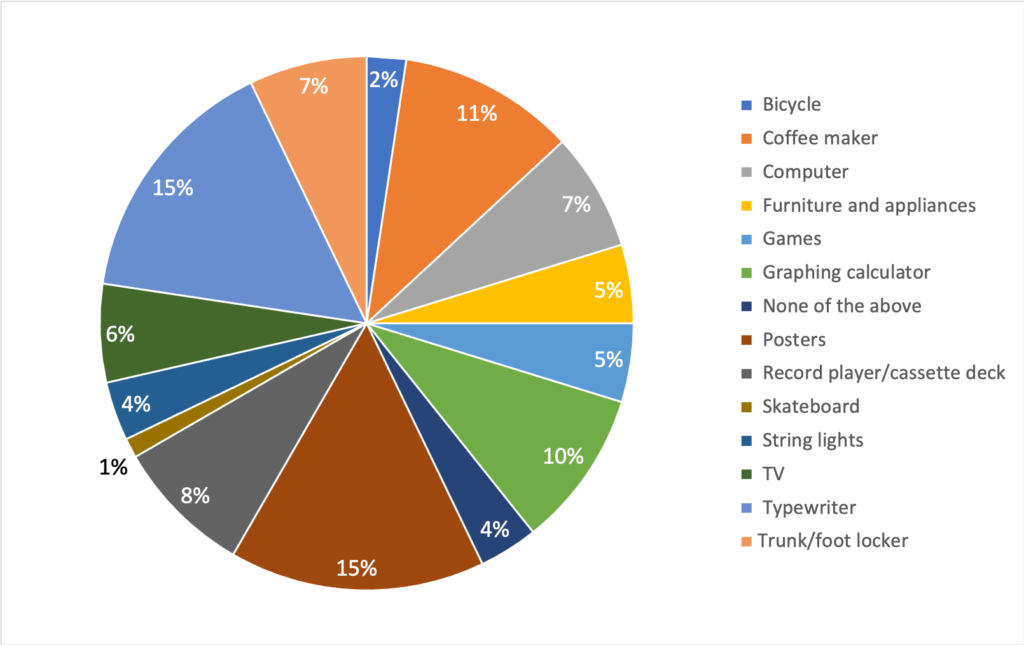
An Interview with Dr. Erin Hambrick about her experience as a facilitator of a Faculty Learning Community.
The Office of the Provost and Executive Vice Chancellor, as part of RooSTRONG, funded faculty participation in learning communities to explore teaching practice. FLCs are cohorts of faculty members, across all ranks, including non-tenure track, from different disciplines or fields of study. The community provides a supportive environment where faculty can tune into a variety of activities and experiment with new approaches to teaching, share successes and challenges, launch scholarly work, and disseminate instructional practices and tools.
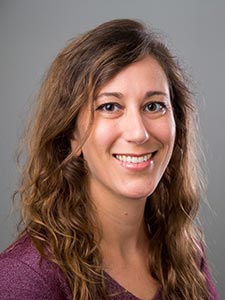
Dr. Erin Hambrick
Alexis: Which Faculty Learning Community are you leading?
Erin: Cognitive Bandwidth and Trauma-Informed Teaching and Learning
Alexis: What is the focus?
Erin: This FLC was focused on people who have experienced trauma or other sorts of adversities that might influence the degree of cognitive bandwidth that they have available to them as learners on the UMKC campus.
Alexis: Spring 2020 was the first time UMKC formally offered FLCs through the Provost Office. How did it come together for your group?
Erin: From the beginning, one thing made me really motivated was noticing how hungry and excited faculty were to have a forum to discuss critical issues with one another, and also a forum in which they could advance their own learning. Faculty give so much time thinking about how we teach our students. But the faculty desire to continue to grow and learn is strong and there aren’t a lot of natural outlets available.
Alexis: What was the most challenging aspect of facilitating the FLC?
Erin: Scheduling was extremely tough because we purposefully pulled from a diverse pool of faculty from across campus and from across disciplines. Finding times that converge was absolutely hard. Getting interest and buy-in was not hard whatsoever.
Alexis: How did the COVID-19 crisis affect the FLC?
Erin: We spent some of the early meetings talking over things that faculty wanted to do this semester. Faculty began reading articles about the ways that trauma, adversity, and being of a particular race, ethnicity, or gender identity status can disadvantage the bandwidth available to students. We had meetings brainstorming and thinking about how to disseminate the information to other faculty members. We began discussing how to conduct the business of higher education through a trauma-informed lens. We had many big ideas …. And the COVID-19 crisis landed in the middle of them.
In some ways having our own bandwidth reduced helped us focus on what’s feasible within one semester. Because of time contraints, we all began to recognize that actually, a very important outcome of something like this is our ability to grow in our own learning, our own recognition of a problem, and our ability to brainstorm about the ways that we individually can contribute to tackling this problem on campus.
At the beginning everybody was thinking external, you know, how do we help others learn all the stuff that we’re learning? It’s so important and it’s so exciting. Then we shifted and began to consider what is our individual responsibility? I really saw faculty talking about and thinking through action steps for improving their own teaching. They also did that in ways that they can support others who are interested in down the road. It might be that other faculty could then utilize the tools and strategies members of this FLC developed in their own classes.
Alexis: In what ways, if any, did the FLC provide natural support for faculty?
Erin: We shifted focus and decided to use the time that we have together to talk about how the COVID-19 crisis could be affecting bandwidth in our students and what we might be able to do about it right now. We are currently going through something that could be reducing bandwidth, not only for students, but also for us as faculty. That led the group to value the time that we had together to be able to discuss, and ultimately better relate to, what it is that our students are experiencing. When we ourselves are part of a crisis and are noticing what it feels like to have bandwidth reduced … I think the material really came to life for faculty. I have a lot of hope for how faculty will very genuinely be able to take some of these principles and apply them in future semesters.
Alexis: Why should we continue faculty learning communities?
Erin: For me the ability to connect with faculty about a topic that we all identified as important, and then to be able to have the space to learn and engage is great. It is different from a workshop that meets once. We revisited our topic over time and got the benefit of developing relationships in a supportive setting. It also allowed me to create connections across campus that I will rely on and keep up with in the future. And so I just think that that outcome was really realized.
A Resource for UMKC Faculty
UMKC Faculty Affairs created a compilation of resources that have been appearing in our inboxes and that we have discovered online. This compilation may be useful to you as you continue to teach this semester and plan for summer and fall.
The resources are available through open access links on the FAN website. They are grouped by the following categories, with each category having several subcategories:
On the webpage, view all resources, view by category and subcategory, or search. This is a curated list – to date there are 39 resources available. More are added each day.
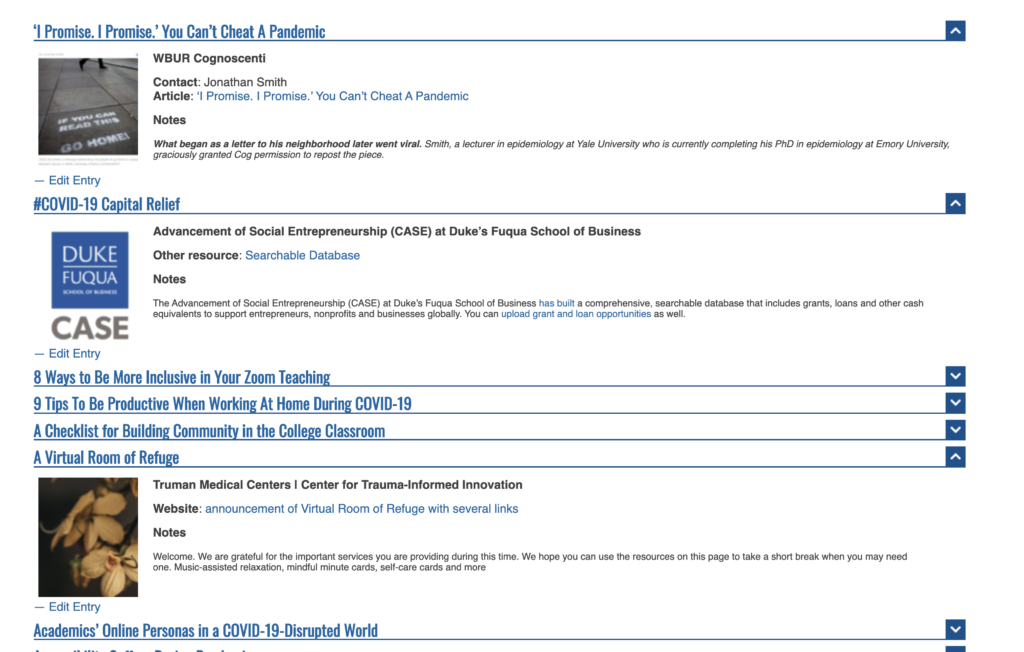
If you have a resource you would like to share, email Alexis Petri at petria@umkc.edu
A few faculty are showing their style with Zoom virtual backgrounds. Roo Connection published a set of virtual backgrounds featuring UMKC landmarks. This gallery pulls together a few fun statement backgrounds from collections made freely available for personal use. If like one of them, click on the image to open it in a new window and then right-click or control-click to save the image.
Canva has set up an online virtual background studio – you make your own background free of charge.
The Faculty Affairs Newsletter is sharing faculty members’ unique take on the question “what are three things that help?” The question is purposefully vague so that we have a range of perspectives.
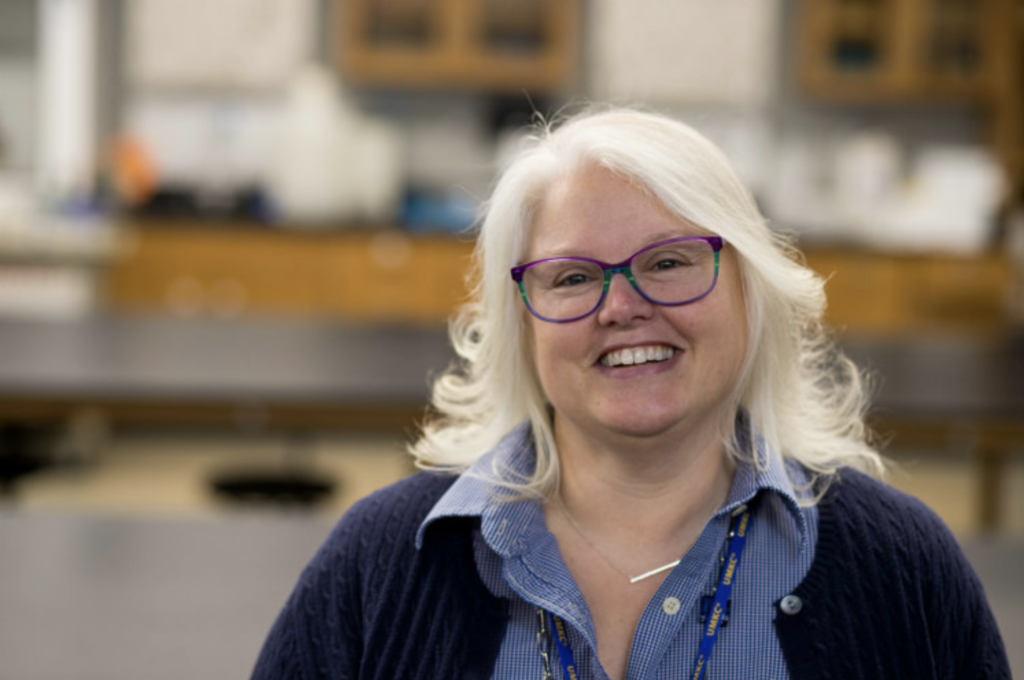
Just as important as taking care of our students is taking care of our selves and our teams! The SBC Advisors set up a Group Me in anticipation of working at home. I have been sending cards through the mail and sharing pictures and updates of me walking with Mr. Diggity, funny memes, and Bitmoji’s. Sharing helps us stay in touch to support and encourage one another.

“Sharing helps us stay in touch to support and encourage one another.”
Pictured above: Mr. Diggity
I know, I know, what am I doing on TikTok at 50 years old. It’s my 15-minute laugh break every day — okay sometimes a couple of times a day. It’s good to see families coming together to make videos, to share stories of triumph, to hear funny antidotes, and to try some cool new science stuff. Did you know you can make slippers from balloons? I have laughed so hard I cried at some of these!
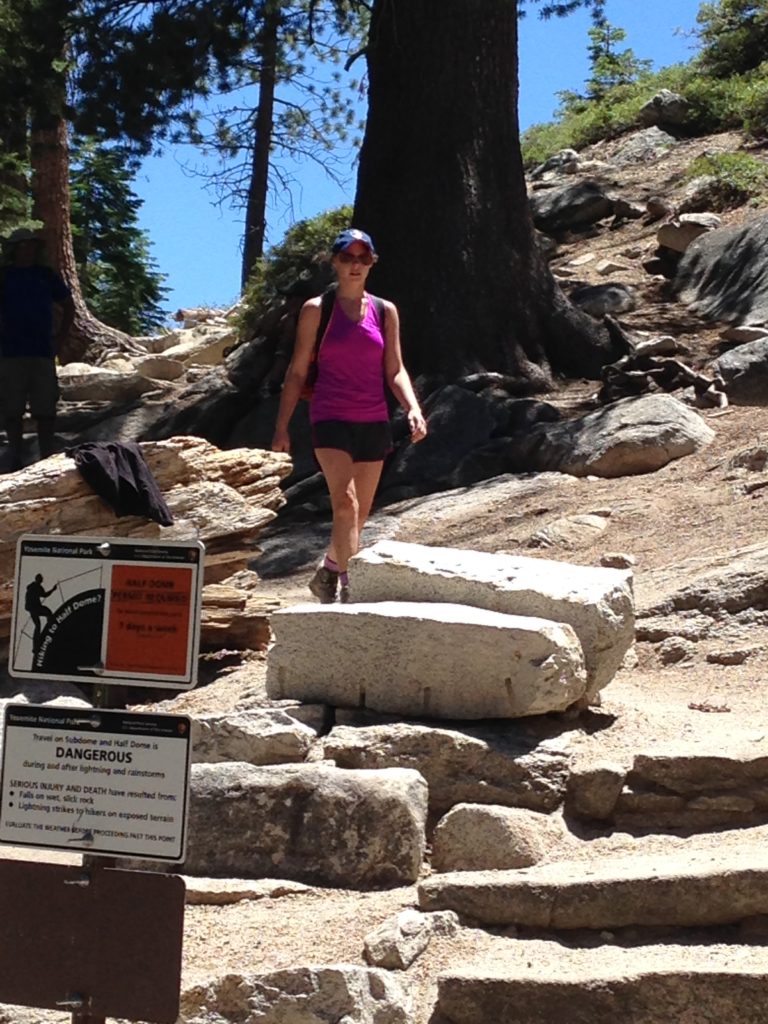
“It satisfies my soul and lets me recenter to keep going.”
Pictured above: My daughter Kristina when she and I hiked Half Dome in 2014.
I have always enjoyed reading but right now this is a perfect way to escape for an hour or two. Some of my favorite books are biographies of people who have hiked the Pacific Crest Trail and the Appalachian Trail. I picture myself out there, making it on my own out in the wild. It satisfies my soul and lets me recenter to keep going.
Thank you to Tammy Welchert for sharing her three things. This is set up with a readers write format. Want to share your three things? Fill out the entry form and they will be included in the next issue. Even if there are many responses – we will figure it out.
The Faculty Affairs Newsletter is sharing faculty members’ unique take on the question “what are three things that help?” The question is purposefully vague so that we have a range of perspectives.
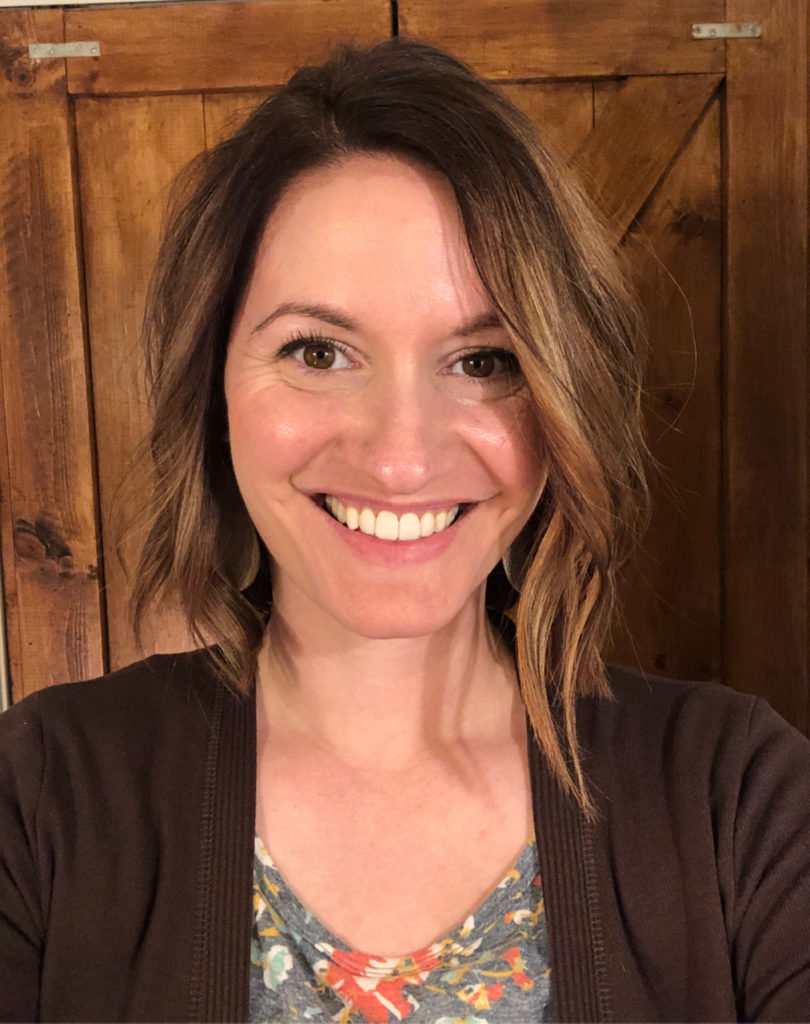
For me, personally, I find the following three things helpful in this season:

One foot at home and one at work- I’m in a tea party and webinar at the same time!
I have hired someone to help engage my children when I need to buckle down for the sake of productivity. I’m helping a high school student who is also out of school earn some money, while helping keep the right relationship dynamic with my children. Expecting them to conduct themselves as adults while I’m teaching via zoom isn’t realistic, and neither is believing I can work well while playing with them. I’m able to prioritize my most essential tasks and schedule them during time when they are busy with the high schooler who is helping me. Setting designated productive times, and ensuring I’m not getting edgy with my kids or spouse has been invaluable and offered some much-needed balance for me. Things have fallen from my spinning plates, but not as many because of this intentional step.
I’m in a small group at church which is meeting online now, as well as our childrens’ church, daily devotions, and weekly services. They are streamed online and available on social media so that whether I’m using a computer or just my phone, I can access community when I need to. We have chats in all of them to remain close; we express and recognize needs and help to support each other. I would venture to suggest we might have grown closer as a community this way than we do chasing children and volunteering on face to face Sundays! Keeping a sense of normalcy and schedule has been helpful and reassuring to our family.
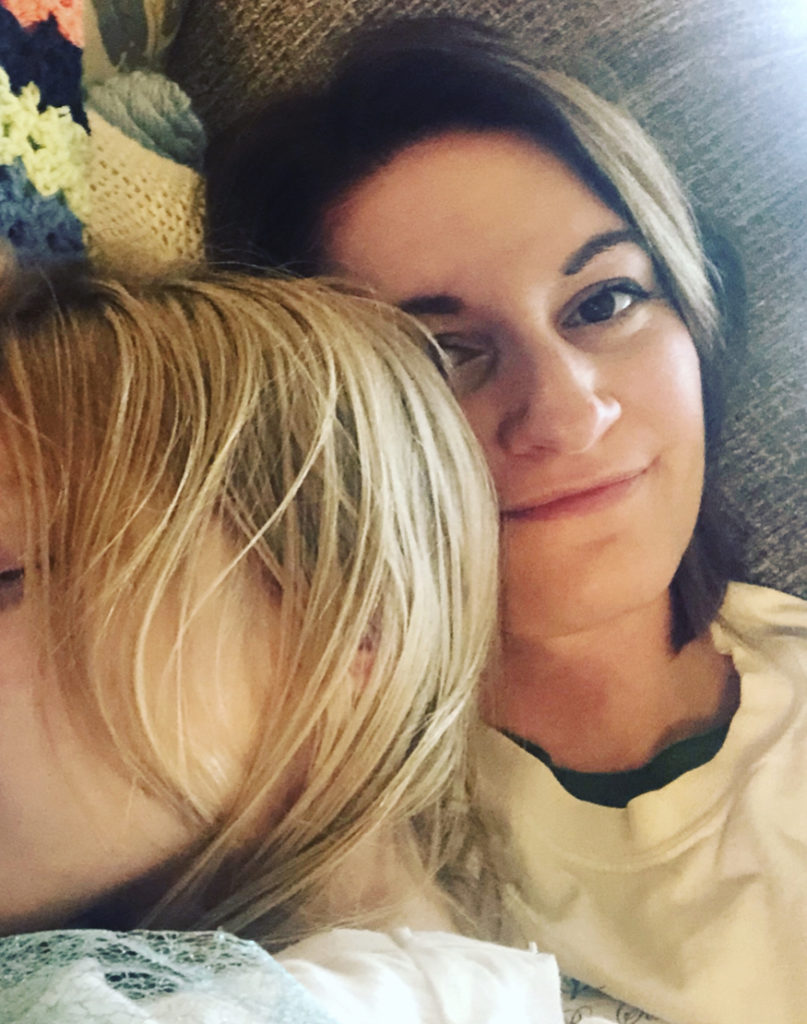
Me as a Mom
It would be easy to feel distant from close friends we work with and isolated in what we’re doing, but luckily I don’t. I have lots of means to communicate with my work community, and we have! Most people who were teaching face2face three weeks ago don’t have the confidence and experience with teaching exclusively online now. I feel welcome to contact the two online program directors in my division for help and guidance, and they always have reassurance, resources, and patience for me. In this circumstance, like in other troubling times, a word of encouragement, and genuine concern go a long way.
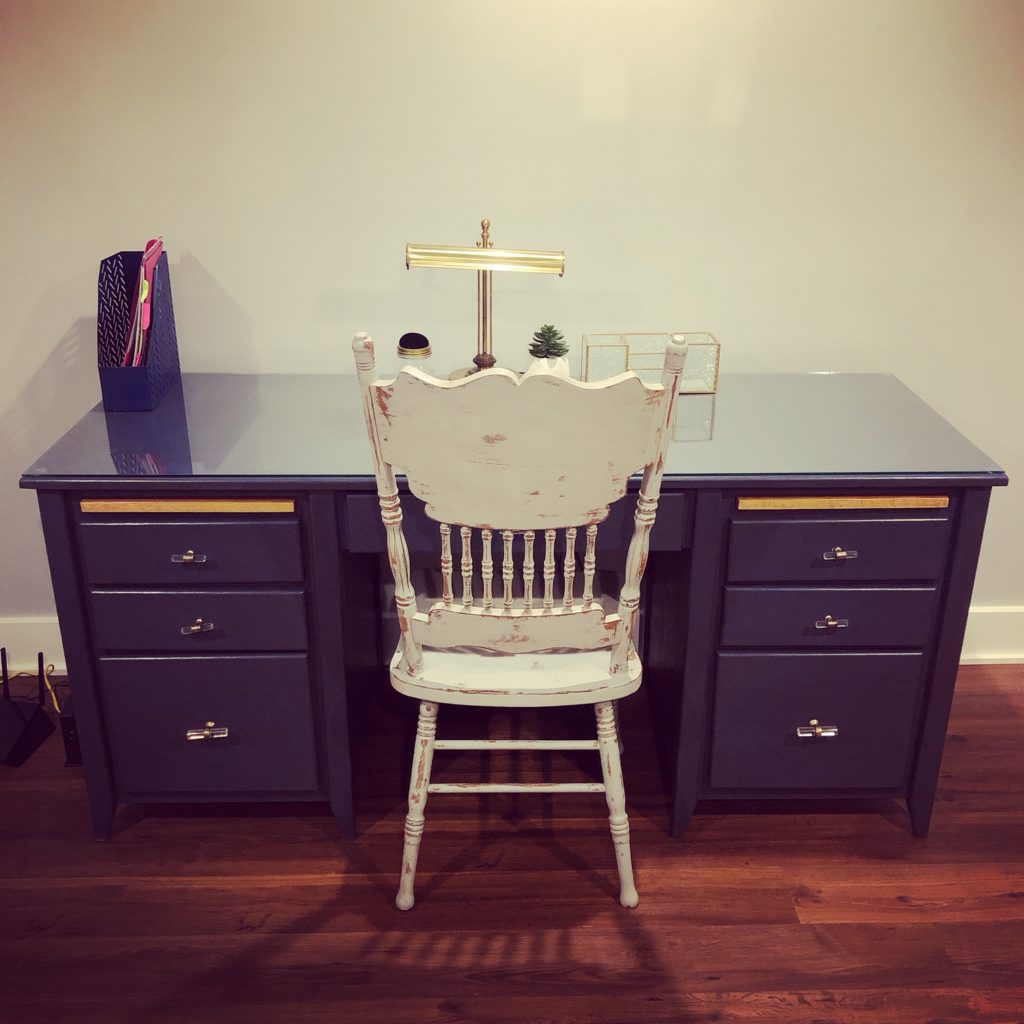
My home work space
Thank you to Julie Sutton who volunteered to go first. This is set up with a readers write format. Want to share your three things? Fill out the entry form and they will be included in the next issue. Even if there are many responses – we will figure it out.